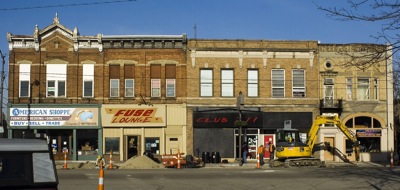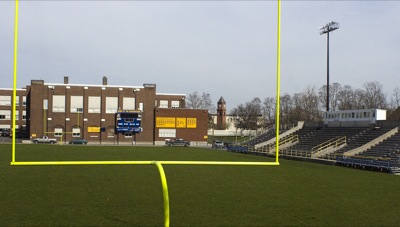Thursday, April 1st, 2010
Controversy surrounds spending $3 million of St. Marys school building funds
By Janie Southard
ST. MARYS - What to do with $3 million - that's the bittersweet dilemma members of the board of education face. Sweet because it's $3 million. Bitter because, due to public controversy, it looks like a no win deal no matter how the money is spent or saved.
Bottom line: It's the district's choice to spend or not spend, as long as the money is used within the stated parameters included in language of the levy voters passed in 2007 to get local funding for the district's $55 million Ohio Schools Facilities Commission construction/renovation project.
More than 50 people attended the board of education's special meeting Thursday night to discuss what can be done with the money. The board's bond attorney, Rebecca Princehorn of Bricker Eckler, LLD, explained the legal possibilities.
"Obviously, the project was over funded or you wouldn't have an extra $3 million. I'm going to explain what you can do legally with the money," Princehorn said. The "over funding" is a result of lower than expected bids for the project.
The district has the option of spending the money in three pots directly related to the OSFC project: #010, which is the state and local money shares; #034, which will pay building maintenance for 23 years, required by the state; and #004, which is Locally Funded Initiative (LFI) money, which includes funding for the auditorium, terazzo flooring and roofing. Also an account option is the district's own #003, permanent improvement fund.
"The board can let that money sit for 10-15 years or more, until they decide there's absolutely nothing else they want to do that falls within the original ballot language," said Distric Treasurer Tom Sommer, following the meeting.
As to paying down the bonds, which has been the cry of several residents, Princehorn said that process is not like paying down your home mortgage and reducing your payment.
"The bond term is set at a fixed interest, which was the best deal for the community. People bought the bonds because of the tax-exempt status ... and to pay it off early would penalize the investors," she said.
The bonds are structured so none can be called in (for payment) until 2017 and no actual payment can take place until after Dec. 1, 2018.
Most of the seven or eight who spoke favored hanging on to the money for a variety of reasons.
One man from the crowd advised the board to leave the money in the building fund.
"I'm 150 percent in favor of leaving it in the building fund. I guarantee that there will be problems with the building within one year. There always is. I've been in construction all my life," he said as others mumbled agreement.
Following the meeting, board president Rees McKee said the board has already earmarked 1/2 percent from Permanent Improvement fund to satisfy the 23-year maintenance agreement, which amounts to about $130,000 a year.
"We don't have to do anything. We're checking our options and we looking at what's best for the district. If it's spending the money now then that's what we need to do," McKee said.


